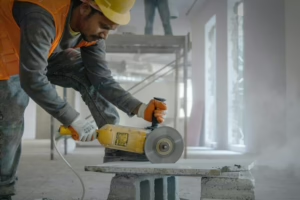Malaise in the workplace can take many forms – from fear and exclusion to distress, mismanagement, and loneliness. How did we lose our way so completely? How can we as leaders create caring communities within our teams that will underpin a supportive culture of work where people feel like they belong?
We need to live and work communally again, with, and to, as social beings searching for connection and belonging.
Dacher Keltner, an American psychologist, coined a concept that is less known or appreciated, “Survival of the Kindest“. Keltner believed that our ancestors were better off if they learned to be kind, to cooperate and not compete. They had better chances of survival compared to those who were isolated and fought.
Up until about 200 years, we lived close-knitted communities and in harmony to nature. Since the Industrial Revolution, our western way of life has become increasingly individualistic. We are more concerned with our individual needs and wants than we are about caring for others, working in communities, and living together.
Research shows that caring communities are essential for meeting our basic needs. <a href="https://www.health.harvard.edu/blog/the-secret-to-happiness-heres-some-advice-from-the-longest-running-study-on-happiness-2017100512543#:~:text=Stay%20connected,Waldinger." Stay connected, Waldinger.
Harvard’s study concluded that people with more social connections to friends, family and colleagues live longer, are physically healthier and happier than those without. The study also shows that it is the quality of the relationships, not the wealth, fame or social status, which has the biggest impact on our mental and physical health.
A community is an association of people who share common values, characteristics or interests.
We can see the workplace as a collective of employees working together in order to achieve the vision and mission of the company. The group of employees is usually organised into teams that work together to achieve common objectives in order to fulfill the overall purpose.
The success and health of an organisation is determined by the happiness and health of its teams, their sense of connection, community and collaboration.
As mentioned above, however, collaboration towards common goals is not enough. The quality of relationships, the way we treat and see each other is what makes a positive and healthy work culture. This is what creates a community, a feeling of “we are all in this together”.
Work culture is determined by leaders. Leaders set the tone of how we behave in the workplace, and how we treat our colleagues. This ultimately impacts how we feel about work.
We need leaders who are compassionate and can create caring teams.
In the workplace, attitudes such as kindness, compassion, and empathy are often seen as sentimental and soft.
World Economic Forum’s Future of Jobs Report, 2025, identifies five top skills for the future: empathy, resilience, creativity, analytical thinking, and self-awareness. The report states that these skills allow employees to adapt, collaborate and engage.
What questions should a compassionate leader ask?
How can we then create conditions that will enable us to have a caring community in our teams through empathic leadership?
How can leaders create relationships with their team members or colleagues in a way that is ecocentric rather than egocentric?
Leaders can start to tap into non-conceptual Intelligences, which are vital for the health and well-being of a team or community. This includes tapping into intuition, imagination and intrinsic relatedness, as well as our need for space and freedom.
We can ask systemic questions, which are not transactional, for the benefit of teams.
What can I do to help? What can I do to help? What’s the situation? What’s happening? What else could be causing the situation? What is the power dynamic in these relationships? What is needed now? How can we work together?
Listen carefully to each person and their perspective. This will help you build trust and respect differences.
Leaders need to move from tunnel-focused ego-centric awareness, to an open, kind, compassionate ecoawareness. I as it relates to others.
We naturally care about each other when we feel like we are part of a supportive community.
A 5-step approach to fostering caring communities within teams
These steps are based upon Jevon Danieli’s Integral Open Awareness Process.
This team exercise is best done in a large circle, without any tables or other objects blocking the space between participants.
1. What is our intention? One main purpose, goal or vision
In the first step, you will need to state your shared vision, goal or purpose. Make sure everyone is on board, give time for clarification and ask each member of the team what they intend to do in order to achieve the main goal.
2. Open awareness: Create a participatory environment by connecting the collective consciousness of your team.
Invite the team to pause for a few moments. Slow down, be aware of the breath, the physical sensations in the body and the thoughts and emotions that are going on.
This stage will take at least 10 minutes. Do not be afraid to slow down and sit together in silence. This is the only way for team members to enter a different space where they can connect with themselves, others and deeper non-conceptual levels of knowing.
3. Expression: What is the collective experience of open awareness? What are some ideas that we can use to help us achieve our intention?
Invite your team to discuss their ideas. Be sure to listen to everyone in the team and not leave anyone out. Allow this stage to take its time so that other intelligences, such as intuition or imagination, can come up with ideas.
It’s best to let the team members speak when they wish to rather than go around in a circle or room.
Also, it is helpful to have someone capture ideas on a flipchart or whiteboard.
4. Synthesis: What idea represents our unified thought that represents the synthesis between all the ideas we expressed in the previous round of discussion?
Invite your team to unify all of the captured ideas into a common idea. It’s important to give yourself enough time to do this and to have faith that the idea will come to you. Do not be afraid of silence. These silent moments and non-conceptual gaps are often where the most innovative ideas emerge.
5. Integration: How do we implement our idea to achieve our goal or intention?
The first step is to identify the unified goal. This may involve not doing something, or unlearning an old mental model or view.
is a way of life for and compassion in leadership. People feel respected, connected and part of the community when they are listened to.
A healthy community, made up of teams of healthy people who have healthy relationships, gives us a feeling of safety and belonging. It gives us strength in difficult times and a sense of purpose. We are more likely to do our best, care about each other and give back when we feel like we’re part of a supportive community.
Culture Pioneers, a campaign powered by HRZone, is proudly a part of the HRZone family. We’re on a mission both to support organisations that are driving culture change and to commend those individuals who are challenging the status-quo in the workplace.
Our campaign offers expert advice and insight, while celebrating the workplace cultures that have a real impact on business. The best companies don’t simply adapt, they shape the future.


